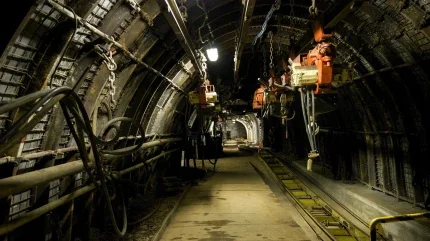
Last month I wrote that October was set to be a month of cuts but, while the axe has fallen on several projects, October will certainly go down as a month of triumphs.
London’s Crossrail had GBP 1bn lopped off its budget. New York and New Jersey’s Access to the Regions Core project was killed for the second time. But two other news stories grabbed the world’s attention.
The first was the rescue of the 33 Chilean miners trapped some 700m underground in a collapsed copper mine. Their plight first caught the eye of the world’s media when, after 17 days of being trapped, the miners were discovered by a probe hole alive and relatively well.
Three rescues attempts were launched, together costing the Chilean government between USD 10M and USD 20M and it quickly became a race between the tunnellers, the oil drillers and the deep well excavators.
The raise borer launched as the tunnellers’ effort was known to be the slowest method due the two stage bore process – a pilot hole followed by a reamer. But as a well-established technology in Chile it was a safety net for the faster but less tested alternatives.
The deep well hammer drill won the race but the tunnelling industry had more to give. Those with sharp enough eyes to see through tears of joy may have noticed that all references to commercial enterprises, even helmet stickers, disappeared from their TV screens before the arrival on site of President Sebastian Pinera and his entourage, leaving only the Chilean FLAG recognisable. This was after government orders to that effect.
One of the logos to be removed was that of Austrian contractor and equipment supplier Ostu-Stettin Hoch- und Tiefbau of Leoben. Mining project director Gerhard Brugger explained that the company owned the famous yellow hoisting frame and winch used in lifting the Fenix 2 escape capsule through the narrow bore, and its employees set it up on site and operated it throughout the rescue.
It is nothing short of a miracle that these miners were found and rescued. Luis Urzua, the shift supervisor who was credited with helping the men survive the first 17 days before rescue teams made contact, was the last man to be rescued. After 70 days underground, Urzua now holds the world record for the longest time trapped in a mine.
A second world record was broken last month. On 15 October the Channel Tunnel lost its title as the longest transport tunnel in Europe and Sei-Kan tunnel in Japan lost its title as the longest transport tunnel in the world. The Gotthard Base Tunnel west bore now cuts 57.017km under the Alps with a maximum overburden of 2.5km.
Gotthard is a massive feat of engineering and shows the world the extreme conditions that tunnellers are able to overcome with current technologies and understanding. It is a very proud month for the tunnelling industry as a whole and everyone who played a part on making Gotthard a success deserves that recognition. The supplement accompanying this issue of T&TI goes into details on the base tunnel with interviews from the engineers on site. It is well worth a read!
Jon Young



